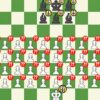
In the bustling, often chaotic world of professional hockey, where the off-season typically screams with blockbuster trades and high-stakes free-agent signings, the Ottawa Senators have adopted a strikingly different approach. General Manager Steve Staios has conducted a notably quiet off-season, a move that isn`t indicative of inaction, but rather a profound, calculated gamble. This strategy is less about external acquisitions and more about an unwavering belief in the internal combustion of a burgeoning young core, a silent roar that echoes confidence rather than desperation.
A Calculated Bet on Internal Growth
Staios’s message is clear, delivered not through grand pronouncements but through the sheer lack of dramatic roster upheaval: “I believe in the group, it`s pretty clear.” This isn`t just a casual statement; it`s the bedrock of the Senators` strategy for the upcoming season. After breaking into the playoffs last year as one of the league`s youngest teams, the organization sees a foundation, not a ceiling. The minimal tinkering — bringing in Jordan Spence to solidify the right side of the blue line and veteran Lars Eller for fourth-line center depth — are surgical adjustments, not wholesale overhauls. They are designed to complement, not redefine, the existing framework.
This approach runs counter to the typical hockey narrative that demands constant, often expensive, upgrades. Staios, however, is banking on something far more organic: the natural progression of young talent. It’s a bold stance in an era where fan bases often crave immediate gratification, but it speaks volumes about the organization’s long-term vision and its assessment of the roster`s intrinsic potential.
The Foundation of Faith: Post-Deadline Performance and Playoff Baptism
The general manager`s confidence isn`t born of blind optimism; it`s rooted in tangible evidence. Staios points to the team’s performance post-trade deadline last season and their subsequent growth during their initial playoff foray. That exposure to high-pressure, high-stakes hockey, he argues, served as an invaluable crucible for the young squad. It wasn`t just about winning; it was about learning, adapting, and understanding the intensity required at the sport`s pinnacle. For a team boasting players like Jake Sanderson, Tim Stutzle, and Ridly Greig, all still under the age of 25, that playoff experience is perceived as a significant accelerator in their development curve.
Indeed, one might even observe a subtle irony here: the “quiet” off-season is, in its own way, the loudest statement of trust an organization can make. It says, unequivocally, that the answers lie within, that the seeds sown are ready to bear fruit, and that the path to contention is paved not with new names, but with the maturation of familiar ones.
The Young Guns` Mandate: No More Excuses
The sentiment from the front office is clearly mirrored in the locker room. Star forward Tim Stutzle articulated this shift in mindset with refreshing candor:
“I think the next step is in our room. The young guys got to take the next step. Obviously, we`re a young team, but we can`t talk about that every year, (about) how young we are. We just got to take steps forward, and that`s what we have to do this year. And, yeah, everybody’s a year older now too, and we`ve been to the playoffs now. We know what it takes to get in, and we just got to show that every day.”
This isn`t merely a rallying cry; it`s a declaration of evolving identity. The Senators are transitioning from a team defined by its youth and potential to one that must now demand results. The “young team” narrative, while once a shield, is now a challenge to overcome. The players themselves acknowledge that the biological clock of professional sports is ticking, and the time for excuses is dwindling.
The Wildcard: Carter Yakemchuk`s Intriguing Potential
Beyond the established young core, the narrative includes an intriguing wildcard in 19-year-old Carter Yakemchuk. While coming off what`s described as a “so-so WHL season,” Staios sees immense potential. Yakemchuk`s training camp performance could become a compelling storyline, potentially stamping his imprint on the team sooner than anticipated. Staios`s expectation for Yakemchuk is “continued growth,” emphasizing a desire for the young player to “come in with the attitude of trying to make the hockey team.” Should Yakemchuk seize this opportunity, it would only further enhance an already potent pool of blossoming talent.
Risks and Rewards of Strategic Patience
Of course, such a strategy is not without its risks. The NHL is an unforgiving league, and relying solely on internal improvement can be a perilous path. What if the anticipated “next step” doesn`t materialize for key players? What if injuries derail progress? These are the inherent variables in Staios`s high-stakes poker game. However, the potential rewards are equally significant. If the young core, now a year older and wiser, truly harnesses their collective potential, the Senators could evolve into a formidable, self-sustaining contender, built from within rather than cobbled together through constant external intervention. It’s a long-term play, designed to cultivate a winning culture and a deep roster that can consistently challenge for the Stanley Cup.
In Ottawa, the quiet off-season isn`t a sign of complacency or constraint. It`s a deliberate act of strategic patience, a profound vote of confidence in a group that the general manager believes is on the cusp of something great. The stage is set for the young Senators to prove that sometimes, the most impactful moves are the ones that aren`t made at all.










